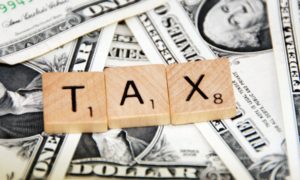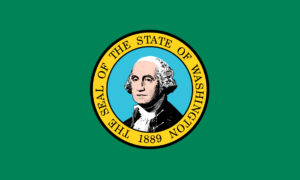New York’s Adult-Use Cannabis License Application

Since the day the MRTA was passed, some big questions have been lingering
For our first post on our much-publicized series on New York’s adult-use cannabis rules and regulations, we are going to cover the specifics on the license application process itself. The application requirements tracks the Marijuana Regulation and Taxation Act (MRTA), in that it reiterates the two-tier system separating production and retail licenses and includes evaluation criteria specifically enumerated in the MRTA. Let’s dive right in!
The actual application
The application itself will likely look very similar to New York’s Conditional Adult-Use Retail Dispensary (CAURD) application. Although the actual application has not been released, we anticipate that it will also be an online application that allows for uploading required documents in an organized and systematic fashion.
A significant deviation from the CAURD application is that adult-use applications will be reviewed on a rolling basis. This will make it incredibly important for applicants to submit applications as soon as the application portal opens, given the location proximity limitations for retail dispensaries and on-site consumption locations, as well as the possibility of license caps (see more below!).
Applications will be heavy on disclosure and details. All True Parties in Interest must be disclosed, whether as an owner of the applicant or under the OCM’s definition of a “True Party of Interest” (TPI). Broadly speaking (but by no means comprehensively), any individual or entity qualifies as a TPI if they:
- Have an ownership interest in the applicant;
- Have a financial interest in the applicant, including but not limited to assuming the applicant’s debt;
- Have control over the applicant;
- Is the spouse of an owner; or
- Are contractually entitled to receive the greater of:
- 10% of gross revenue;
- 50% of net profit; or
- $100,000 from the licensee in a calendar year.
License caps
Since the day the MRTA was passed, one of the big questions was whether New York would cap the number of licenses. The answer is, well, kind of. The rules and regulations do not provide an actual cap on the number of licenses issued across any license type. However, the rules and regulations do provide a proximity limitation for retails dispensaries. For towns with a population of 20,000 or more, no retail dispensary or on-site consumption licensee can be within 1,000 feet of another retail dispensary or on-site consumption licensee. The distance limitation is 2,000 feet for towns with a population of 20,000 or less.
The rules and regulations also allow for the possibility future caps, as limits may be imposed on the acceptance of applications based on:
- Total number of licenses;
- Location or authorized region of operations;
- Size of operation or output; and
- Operating conditions.
As we noted when first analyzing the MRTA, the requirement that retail dispensaries and on-site consumption applicant provide written notice to their municipality may also act as a de facto cap. It is imminently foreseeable that municipalities may begin submitting negative opinions regarding an applicant to the OCM once the municipality deems itself saturated.
License fees
The rules and regulations contemplate two separate fees: (i) an application fee of $1,000 for adult-use licenses; and (ii) license fees upon licensure based on the specific license type. We will cover the different license fees in our posts on the specific license types.
Real estate
New York has made clear from the moment the MRTA was passed that a license applicant’s real estate “situation” is a critical component to the licensing process. Upon provision license approval, applicants will have to disclose:
- Information about who receives payment of rent (if the premises is leased);
- Information about the premises, including:
- The address;
- Photos of the premises;
- GPS coordinates for the premises;
- Architectural drawings and information regarding the appearance of the exterior and interior of the premises; and
- A floor plan
- A statement that the location does not violate the MRTA’s requirements;
- A statement regarding compliance with any required notice to the applicant’s municipality;
- The premises’ certificate of occupancy; and
- Proof of a plan to obtain insurance.
We will comprehensively cover application real estate requirements, but this is a good primer on the minimum applicants should start preparing as part of their New York cannabis license applications.
Evaluation criteria
As an important caveat before diving into the enumerated evaluation criteria, the rules and regulations note that the Cannabis Control Board (CCB) may prioritize licensure based on region, license type, and social and economic equity status. Beyond evaluating compliance with the rules and regulations and the MRTA’s evaluation criteria, the OCM identified the following additional criteria for evaluation:
- The applicant’s community impact plan, highlighting the applicant’s proposed strategy for community engagement;
- The applicant’s energy and environmental plan;
- Completion of workforce or training programs offered by the OCM;
- The applicant’s history in creating and maintaining an equitable workplace environment;
- The applicant’s history in creating and delivering culturally and linguistically competent services to diverse and underserved populations; and
- The applicant’s history in serving in community leadership roles.
Prohibitions
The rules and regulations contain a lot of prohibitions that applicants will have to navigate. The big one is this: no TPI can have an ownership interest or directly profit from both suppliers and a retailer. While the MRTA has always had a clear ban on vertical integration, the rules and regulations (and subsequent commentary) indicates that this limitation applies to ownership interests outside of New York. Ergo, an individual who has an ownership interest in vertically integrated cannabis business in Oregon have an ownership interest in a retail side license in New York. This limitation raises all sorts of questions, from the constitutionality of the limitation to the availability of financing for applicants (both questions we’ll address in a later post).
All in all, the New York cannabis license application process is comprehensive, with a focus on transparency and pushing forward the MRTA’s original goals. Stay tuned for the next post in our series on New York’s adult-use rules and regulations, and our upcoming webinar series!
Source: Canna Law Blog






































